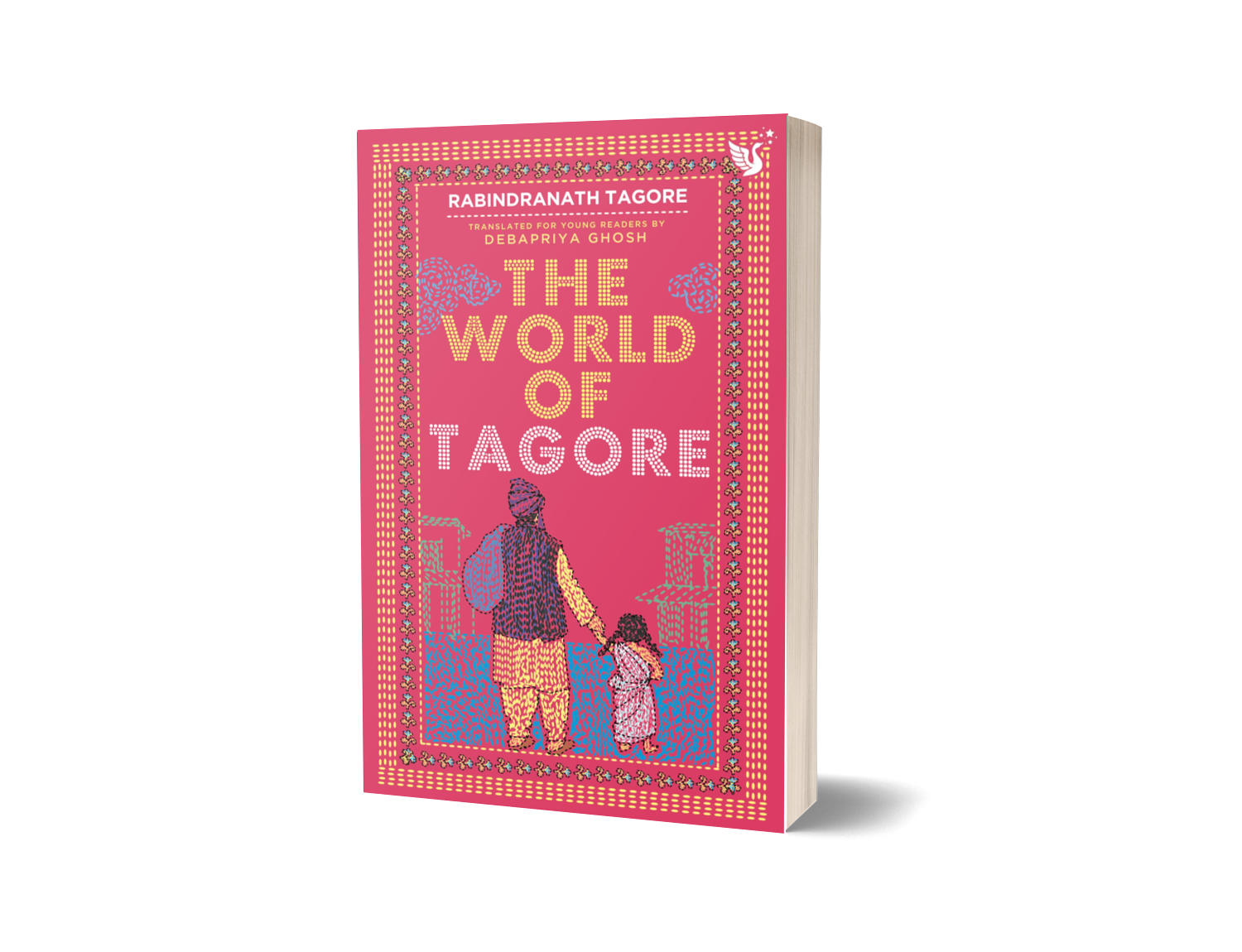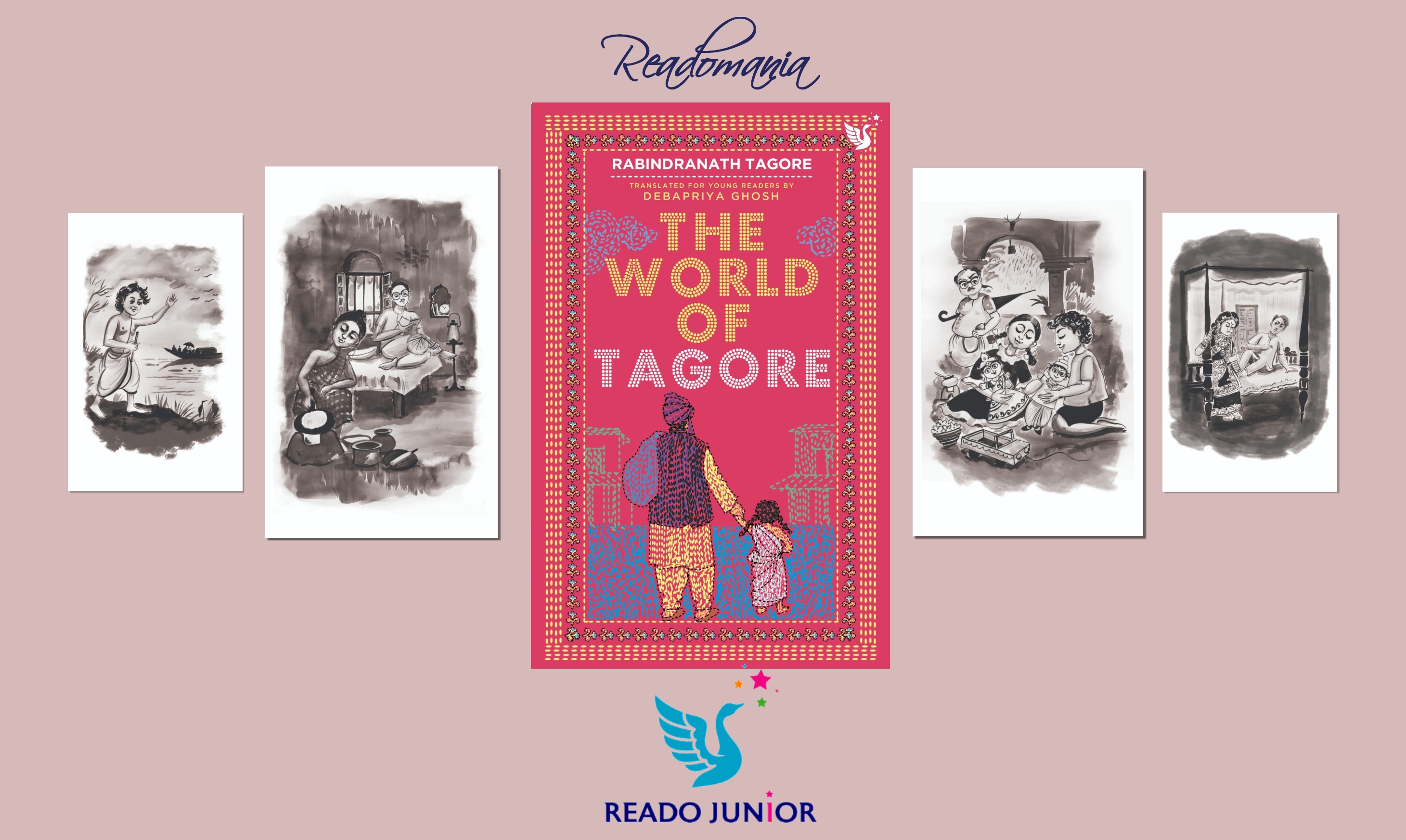In a world where the pace of life often rushes forward, and the clamour of modernity can sometimes overshadow the timeless echoes of the past, Rabindranath Tagore’s short stories offer a refreshing pause. For today’s young readers, delving into Tagore's works provides not just a literary journey, but an opportunity to engage with profound and universal themes that remain as relevant as ever. Nobel Laureate and literature luminary, Tagore crafted stories that resonate across generations, transcending cultural boundaries and speaking to the core of human experience.
However, the elegant yet complex English used in many of Rabindranath Tagore's translations can sometimes pose a challenge for today's readers, especially the youngsters, who are accustomed to more contemporary language styles. The rich, archaic vocabulary and intricate sentence structures may create a barrier to understanding, potentially obscuring the beauty and depth of the Bard’s insights. And that is why Readomania entrusted Debapriya Ghosh with the task of making Tagore more palatable for today’s youth. And boy, has she excelled herself in The World of Tagore! published under Reado Junior.

As an academician, Debapriya understood the challenges that high school students faced when they had to read Tagore’s ‘Atithi’ as part of their curriculum (ISC). The societal norms of the day, the complicated names, the archaic translation were all off-putting for her students. And that is why she has in The World of Tagore picked up stories that will appeal to the young minds and simplified Tagore’s language, while preserving the essence of his storytelling. This has made the book more accessible and engaging for modern audiences. By adapting Tagore’s prose into a more straightforward and relatable form, Debapriya has enabled readers to easily grasp his profound themes and appreciate the timeless relevance of his stories without getting hindered by linguistic hurdles.
Rabindranath Tagore's stories are timeless because he delves deep into human emotions. The feelings of a boy living far away from home, or a boy who is a wanderer by nature, a girl who cannot speak and struggles to express herself or a little girl loving a Kabuliwala, unconditionally, are universal despite the lapse of more than a century.

His narratives, rich with cultural depth and emotional insight, invite readers to explore the intricate tapestry of life, love, and identity. By embracing Tagore’s short stories, young readers can connect with the universal aspects of the human condition while gaining a deeper understanding of diverse cultural perspectives and the enduring power of thoughtful storytelling.
Tagore's stories are characterized by a wealth of characters. Each character is unique and while reading about them, one can identify such characters in contemporary society. Be it the wandering spirit of Tarapada or the predictability and jealousy of Charushoshi, be it the pathos of young Ratan’s longing to belong yet her sense of self-respect, or the Kabuliwala’s affection for Mini in whom he saw his own daughter, the mute Shubha’s love for mute animals, or Photik’s longing for ‘home’ which he willingly left, or Raicharan’s sense of duty...Tagore’s characters are lovable and unforgettable. They are so relatable that they almost become family members at dinner-table conversations.
Come to think of it, the dark humour of ‘Konkal’ (The Skeleton) is far ahead of its times. The trauma of widowhood is beautifully blended with humour. Through his witty and sometimes cynical remarks, Tagore exposes the pretensions and follies of the social elite and reformist movements.
Tagore masterfully blends psychological horror with deep philosophical undertones, creating a chilling and thought-provoking narrative in ‘Kshudito Pashan’ (The Hungry Stones). The story is blended with history and depicts social evils like slavery. It also delves into the profound fears and anxieties of human existence.
Then again, pieces like ‘Postmaster’ are purely poetic and explore human emotions.
Tagore's setting and characters are mostly rural. He addressed social evils like the feudal system, child marriage, class division, caste system, gender disparity etc. in his stories. Although reading Tagore gives us a window into the Indian society in the late 19th and early 20th centuries, a big challenge that today’s young readers face is to connect with the some of the issues because social norms have changed. However, this connection needs to be made because in this way, one can connect with one's own roots. It is important for the young reader to understand how far society has evolved or perhaps, has to evolve even further. To appreciate the liberty and freedom that we enjoy today, it is imperative that we know where we were and how far we have come!

The World of Tagore will definitely whet the appetite of youngsters to explore Tagore further. This will not only enhance their imagination but also improve their language skills and creative writing abilities. That is enough reason for this book to be included as suggested reference reading.
Tagore will always be relevant. His themes will always be universal. By immersing themselves in The World of Tagore, today's young readers can gain a deeper appreciation of the human experience, develop a broader cultural perspective, and find inspiration in the beauty and complexity of his literary world. Add to that, Rupak Neogy’s superlative sketches will elevate the reading experience to several notches!
Come, discover Tagore anew and let his words find a cherished place in your heart.
Go grab your copy from Amazon.


Comments